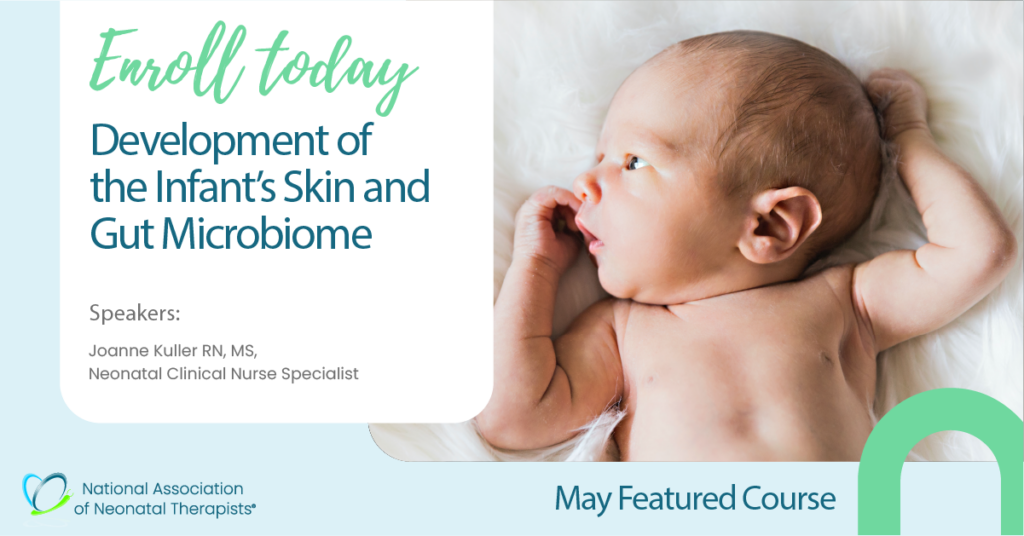“It was a great discussion of gut science, and so interesting to learn about the long-term implications of gut health in neonates.” – Course Participant

Speaker: Joanne Kuller RN, MS, Neonatal Clinical Nurse Specialist has a 30 plus-year career in neonatal care and is a Neonatal Clinical Nurse Specialist at UCSF Benioff Children’s Hospital in Oakland, California. She has written numerous articles and book chapters on neonatal skin care and has been involved in several clinical research projects assessing the barrier function of the neonate’s skin. Ms. Kuller has been a member of the AWHONN Neonatal Skin Care Evidence-Based Guideline development team for all 4 editions.
Course Description: In 2008, the National Institutes of Health launched the Human Microbiome Project to characterize the human microbiome and analyze its role in health and disease. The Microbiome is the resident microbes that are living on and within our body. They are 10 times more prevalent than the human cells in our body! There has been a shift in the view towards microbes since we learned that a few microbes make us sick, but most are commensal “good” bacteria.
What has been most fascinating is how the baby’s skin and gut becomes colonized after birth. Skin colonization occurs rapidly after birth and coincides with significant skin barrier functions. How the intestine is colonized and the 4 sources of intestinal colonization will be reviewed and discussed. There is great interest in this process since the intestinal bacteria plays an important role in the systemic immune system and is linked to your mood. There is a vast difference in the bacteria between vaginal and cesarean delivered infants which has implications for some of these infant’s later health issues. C-section delivered babies have increased rates of obesity, asthma and Necrotizing Enterocolitis (NEC.) Factors that promote healthy microbiota in the neonate will be addressed. Implications for Practice in Birthing units, Nurseries and NICUs will be covered with specific emphasis on the role of Breastfeeding and Skin-to Skin Care.
Target Audience: OT, SLP, PT, RN, MD and Neonatal professionals
Level: Intermediate
Fee: $57 or Free for NANT Members
CE Credit: PT, OT, SLP – 1 hour
Objectives:
- Describe what the Human Microbiome is composed of.
- Describe how the infant’s skin and gut becomes colonized at birth.
- Explain why bacterial differences are so great between vaginal and cesarean delivered infants.
Instructional Method: Recorded webinar with lecture and handouts. Learning assessment and course evaluation follow course.
“I thought this topic was fascinating, and I can’t wait to learn more about it as this research unfolds.” – Andrea Ekstam, MA, CCC-SLP
Click here to view and enroll in the course.
